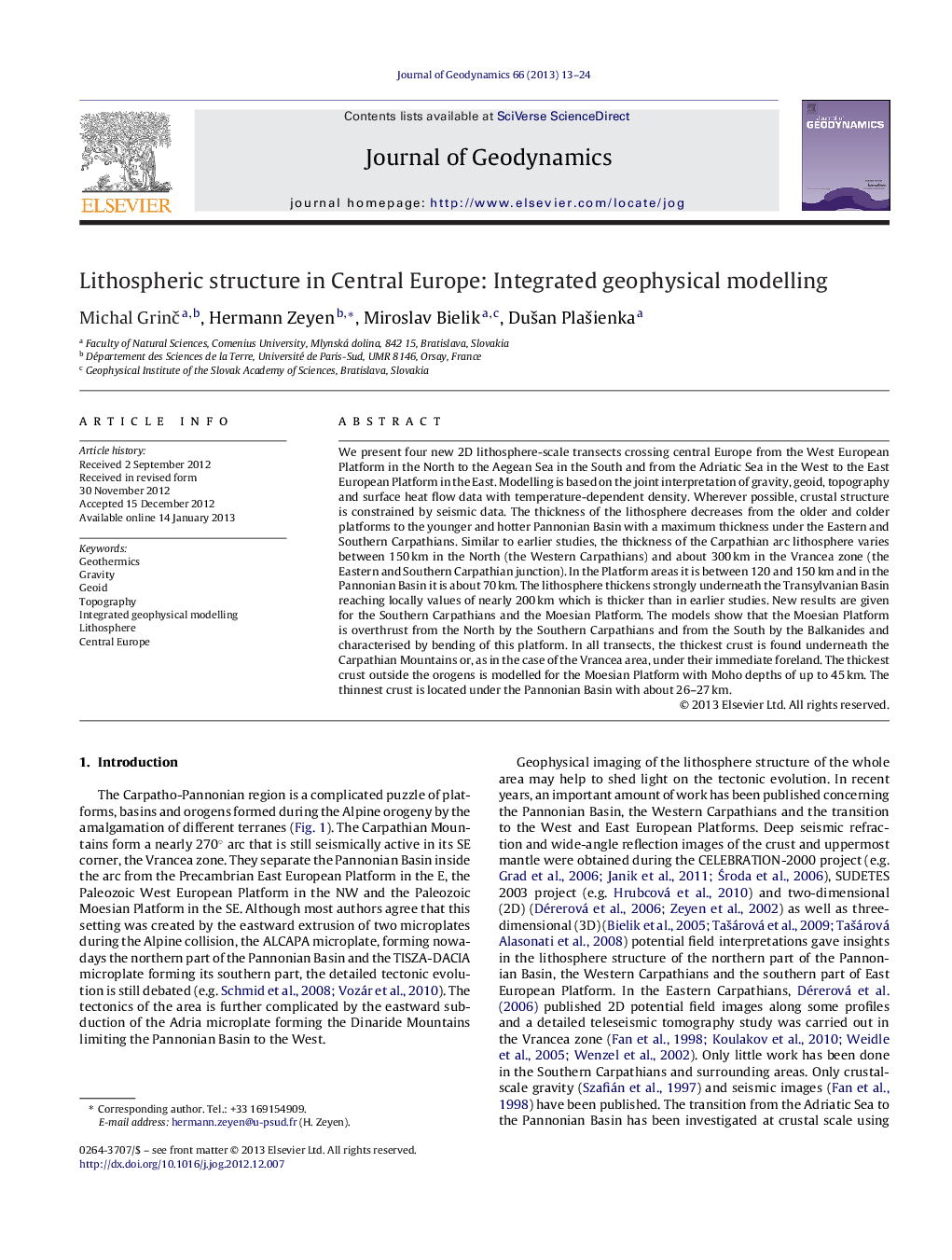| کد مقاله | کد نشریه | سال انتشار | مقاله انگلیسی | نسخه تمام متن |
|---|---|---|---|---|
| 4688219 | 1635783 | 2013 | 12 صفحه PDF | دانلود رایگان |
We present four new 2D lithosphere-scale transects crossing central Europe from the West European Platform in the North to the Aegean Sea in the South and from the Adriatic Sea in the West to the East European Platform in the East. Modelling is based on the joint interpretation of gravity, geoid, topography and surface heat flow data with temperature-dependent density. Wherever possible, crustal structure is constrained by seismic data. The thickness of the lithosphere decreases from the older and colder platforms to the younger and hotter Pannonian Basin with a maximum thickness under the Eastern and Southern Carpathians. Similar to earlier studies, the thickness of the Carpathian arc lithosphere varies between 150 km in the North (the Western Carpathians) and about 300 km in the Vrancea zone (the Eastern and Southern Carpathian junction). In the Platform areas it is between 120 and 150 km and in the Pannonian Basin it is about 70 km. The lithosphere thickens strongly underneath the Transylvanian Basin reaching locally values of nearly 200 km which is thicker than in earlier studies. New results are given for the Southern Carpathians and the Moesian Platform. The models show that the Moesian Platform is overthrust from the North by the Southern Carpathians and from the South by the Balkanides and characterised by bending of this platform. In all transects, the thickest crust is found underneath the Carpathian Mountains or, as in the case of the Vrancea area, under their immediate foreland. The thickest crust outside the orogens is modelled for the Moesian Platform with Moho depths of up to 45 km. The thinnest crust is located under the Pannonian Basin with about 26–27 km.
► Modelling of crustal and lithospheric thickness of the Pannonian Basin and Carpathian Arc.
► Combined interpretation of topography, gravity, geoid and surface heat flow.
► Variations of Carpathian lithosphere thickness indicate progressive slab detachment.
Journal: Journal of Geodynamics - Volume 66, May 2013, Pages 13–24
